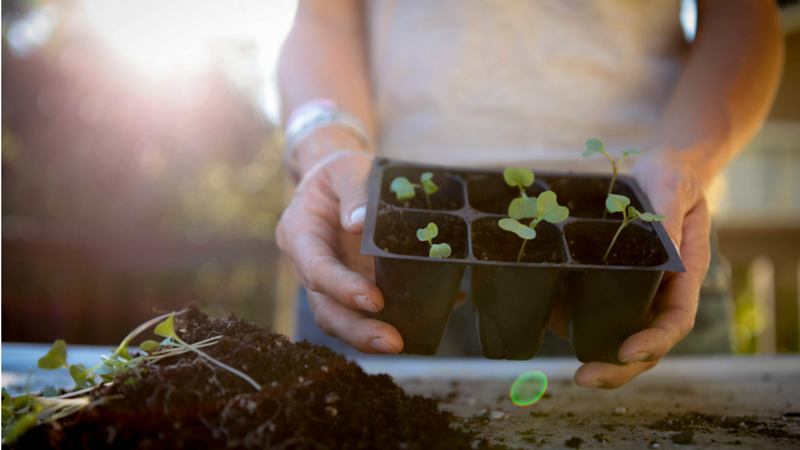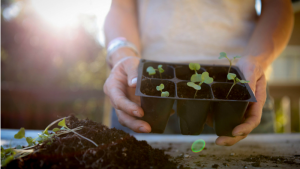Sowing Seeds for Fall Transplants by Mario Villarino

[adning id=”33097″]

If you haven’t already done so, this is the time to begin sowing seeds for fall transplants. According to horticulturist from Texas A&M AgriLife Extension, starting seeds in august allow you to have pansies, calendulas, Johnny-jump-ups, flowering cabbage, lettuce and other cool season transplants ready to plant in the garden in September or early October. If starting your own transplants has been disastrous for you in the past, especially in spring, take heart because starting fall transplants is easier. Since the soil is not as cool as it is in spring, there is not much damping-off disease. Gardeners are able to start the transplants outside where they receive plenty of sunlight; however, don’t let transplants get too much sun. Morning sun and afternoon shade are a good combination. Although many different containers can be used to grow seeds, one of the most convenient is a styrofoam coffee cup. Simply poke three or four holes in the side at the bottom of the cup. Write the name of the variety on the side of the cup so it won’t get lost, as so often happens with labels. Another advantage of using coffee cups is that they’re white and reflect heat.
The next major concern is a potting soil mix. Many standard potting soils will work fairly well, but you can make your own. To one bushel each of vermiculite and peat moss (finely ground pine bark can be substituted for peat moss), add 10 tablespoons of 0-20-0 (superphosphate) and l/2 cup of garden fertilizer, such as 12-24-12. Mix the material thoroughly by putting the ingredients out on the drive, scooping into the bottom and throwing each shovelful on top, pyramid fashion. Another technique is to roll the mixture back and forth in an old tarp. The soil should be slightly watered down so it’s damp but not soggy.Most seeds should be barely covered with the soil mix, but some tiny seeds like lettuce need not be covered at all. Water them thoroughly, preferably by setting them in a pan of water and allowing the soil to soak from the bottom. Allow the containers to drain and then put them in a plastic bag out of sunlight. Within a few days the seedlings will begin to grow. As soon as this happens, take the containers out of the bags and put them in a well-ventilated area. As the seedlings begin to make growth, use any soluble houseplant fertilizer to keep them growing vigorously.If you’ve had problems with disease in the past, you might want to use a fungicide twice: once at planting and again at germination. Lightly dust the seeds prior to planting. A fungicide can also be used to drench young seedlings just as they come up. Before you know it, you’ll have a pot full of tiny seedlings that can either be transplanted into individual containers, or if there aren’t too many in the pot, held until time to go into the garden. Perhaps the simplest technique is just to plant two or three seeds in each pot, thinning them to one plant after a few weeks. If you opt for transplanting, be sure that you handle the young seedling only by the leaves. If you grasp the stem and damage it to any extent, the young seedling will be stunted. Pots for transplants should be filled to within l/4 inch of the rim. A pencil can be used to put a hole in the center of the potting soil mixture. This is where a little moisture is critical; dry soil won’t allow the soil to stay open. Carefully lower the seedling roots into the hole and then use the pencil again in a lever-like action to firm the soil against the root system. Be sure to water the plants carefully, picking up any leaves that get knocked into the soil. Before you know it, you’ll be eating delicious, home-grown broccoli.
[adning id=”33207″]
[adning id=”33207″]
[adning id=”33207″]












